
Aprender es modificar o adquirir nuevas habilidades, destrezas, conocimientos, conductas y valores mediante la experimentación, el estudio, la observación, el razonamiento o la instrucción. Múltiples y variados juegos disponibles hoy en día, desde los más clásicos hasta los más innovadores, pueden ser grandes herramientas para construir una variedad de aprendizajes: lectoescritura, matemáticas, razonamiento y resolución de problemas, etc. aportando motivación e interés a los jugadores. Más allá de la estimulación de las inteligencias múltiples, fomentaremos la autoestima, incentivaremos la cooperación y el trabajo en equipo y mejoraremos el comportamiento y la actitud, entre otros muchos aspectos.
 Auditory Memory Caterpillar
29,90 € (VAT not included)
Auditory Memory Caterpillar
29,90 € (VAT not included)
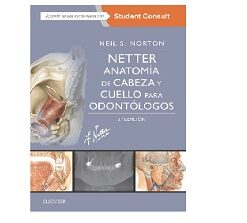 Anatomía de cabeza y cuello para odontólogos
65,90 € (VAT not included)
Anatomía de cabeza y cuello para odontólogos
65,90 € (VAT not included)
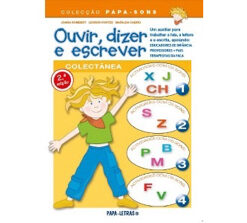 Ouvir, Dizer e Escrever 5 a 7
15,90 € (VAT not included)
Ouvir, Dizer e Escrever 5 a 7
15,90 € (VAT not included)
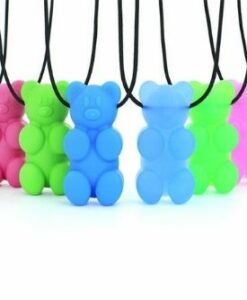 Teddy bear teething necklace
14,55 € (VAT not included)
Teddy bear teething necklace
14,55 € (VAT not included)
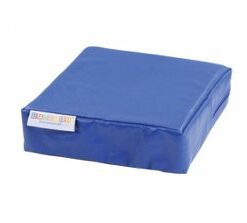 Blue vibrating cushion
35,45 € (VAT not included)
Blue vibrating cushion
35,45 € (VAT not included)
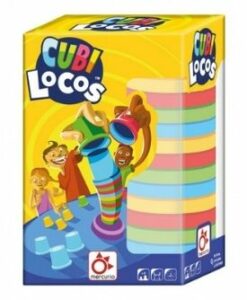 Cubi Locos - Ability and attention
18,15 € (VAT not included)
Cubi Locos - Ability and attention
18,15 € (VAT not included)
 The sock monster
16,90 € (VAT not included)
The sock monster
16,90 € (VAT not included)
Showing 73–101 of 101 resultsSorted by latest
No account yet?
Create an AccountLa fisura labio alvéolo palatina es una de las malformaciones craneofaciales más frecuentes y puede comprometer no sólo la estética facial del paciente sino también su comunicación, y con ella las posibilidades de interacción social y desarrollo emocional. Para la planificación de un tratamiento efectivo para cada dificultad del habla (ya sea quirúrgico, protésico o fonoaudiológico) es necesaria la identificación de sus características y la
investigación de la etiología de las alteraciones, siendo el fonoaudiólogo el especialista indicado para realizar esta tarea. Sin embargo, la falta de literatura en castellano especializada en el área, que detalle los procedimientos para poder realizar el diagnóstico, ha sido el mayor inconveniente para quienes hemos elegido trabajar con estos pacientes.
Tomando en cuenta el reclamo reiterado de colegas, este trabajo privilegia la mayor parte de su contenido en información de interés para el fonoaudiólogo, que permita un abordaje terapéutico personalizado y efectivo, con una visión actual a nivel internacional.
https://logopedicum.com/wp-content/uploads/2018/07/fisura-labio-alveolo-palatina.001-247x223.jpeg 37.96 instock BooksOrofacial myologyOthers 0 0.00 0 https://logopedicum.com/wp-content/uploads/2018/07/fisura-labio-alveolo-palatina.001-247x223.jpeg 16861768179716841685 37.96 36.50 0.00 0.00 2018-07-25T19:31:57+02:00A motricidade fina é a maneira como usamos os nossos braços, mãos e dedos. Refere-se às competências necessárias para manipular um objeto, ou seja, como usar a mão e os dedos de forma precisa, de acordo com a exigência da atividade.
O desenvolvimento da motricidade fina é essencial para a interação da criança com o meio e acontece quando a criança se relaciona com objetos e usa ferramentas, por exemplo nas atividades da vida diária.
Este livro foca-se no desenvolvimento da motricidade fina, nas diversas faixas etárias da infância, ilustrando a sua relação com o dia a dia da criança.
Para além do desenvolvimento, explora as competências necessárias para que a motricidade fina se desenvolva sem problemas.
Ao longo do livro são fornecidas estratégias e atividades práticas, para serem realizadas em casa, no jardim de infância e na escola.
São ainda, aconselhados equipamentos e materiais, que podem ajudar as crianças que apresentam dificuldades nesta área.
Listening and language material that can be used in collective sequences or as a bingo game. Children must identify 30 sounds corresponding to different sound situations illustrated in scenes of everyday life: the kitchen, the dining room, the bedroom, the bathroom, the street and the park. To learn to observe and describe these scenes, as well as to develop differentiation and auditory memory, encourage exchanges and enrich the lexicon.
The box contains 6 sheets of thick laminated cardboard, 30 plastic cards, 1 CD of 32 minutes and 1 didactic guide.
https://logopedicum.com/wp-content/uploads/2017/05/primeraSituaciones-sonoras-1-247x223.jpeg 49.19 instock Hearing, Speech, and VoiceAuditory perceptionLANGUAGENarrative discourse 0 0.00 0 https://logopedicum.com/wp-content/uploads/2017/05/primeraSituaciones-sonoras-1-247x223.jpeg 19021770168411541762 49.19 40.65 0.00 0.00 2017-05-03T12:46:21+02:00Since its first publication in 1967, the Renfrew Action Picture Test has been an assessment tool used by many professionals involved in the speech and language development of children between 3.0 and 8.5 years of age.
Widely used by speech therapists, among other professionals, the test covers words used to convey information (i.e. nouns, verbs, prepositions); present, past and future tenses; irregular forms of plural and past tenses; simple and complex sentence construction; and passive voice. The test provides an information and grammar score that can be compared with the UK school population.
This fifth edition has been completely updated, including revised scoring guidelines, modernized imaging and, through an extensive national program, completely re-standardized for a modern school population, making RAPT a reliable front-line tool in speech and language assessment.
Designed for use in educational settings and/or therapy contexts under adult supervision.
Table of Contents
10 illustrated cards depicting a variety of everyday scenarios.
Instruction leaflet providing guidance on administration.
Scoring guides.
Scoring form.
https://logopedicum.com/wp-content/uploads/2021/01/Action-picture-test-247x300.jpg 72.70 instock LANGUAGEMorphology and syntaxNarrative discourseTESTS 0 0.00 0 https://logopedicum.com/wp-content/uploads/2021/01/Action-picture-test-247x300.jpg 1693168717967931762 72.70 69.90 0.00 0.00 2021-01-26T09:18:07+01:00From texts read by the adult, teacher... the children will tell the story heard by manipulating the characters and places in the house to facilitate the oral reproduction of the story, using the appropriate time markers. The educational guide offers many progressive scenarios varying the number of characters, places and actions.
It is a directed workshop designed to encourage listening and language situations. The manipulation of the material allows students to understand and use familiar vocabulary from home, listen and then construct sentences, including the verbal concepts of time, etc.
It aims to:
Explora el colegio proposes visual supports to observe, through a directed workshop, spaces close to the children and to favor the taking of the floor and group discussion.
Students explore together 8 scenes representing different places in the school: different corners of the classroom, the dining room, the playground, the gymnasium, the school surroundings... Each image introduces scenes from life (characters, objects, actions) that spontaneously provoke discussion.
Very visually attractive material to promote comprehension and oral expression.
The box contains 8 sheets with images of 52 x 37 cm and 1 didactic guide. https://logopedicum.com/wp-content/uploads/2017/05/Explora-el-colegiook-247x223.jpeg 54.33 instock LANGUAGEMorphology and syntaxNarrative discourseSemantics 0 0.00 0 https://logopedicum.com/wp-content/uploads/2017/05/Explora-el-colegiook-247x223.jpeg 17961689190216861779 54.33 44.90 0.00 0.00 2017-05-02T14:07:28+02:00"Enseñame a hablar 2" is a useful and necessary tool to create linguistic structures and promote vocabulary in children. Created and designed to establish a direct communication with the child and for all those who need a systematized and sequenced work in the structuring of language. In this case, it works as a center of interest, the school, the family and the seasons. It also contains vocabulary and illustrations about school, with illustrations adapted to the new normal (special covid-19).
Recommended for children with language problems and all those who have difficulty in understanding and structuring language regardless of their age.
✔ Teaches easy sentence construction ✔ Promotes vocabulary in the child ✔ Helps the child to express correctly in oral language what he/she is seeing ✔ Promotes and facilitates reading comprehension ✔ Develops memory and attention ✔ Develops memory and attention
https://logopedicum.com/wp-content/uploads/2020/12/ensename-a-hablar-2-2-247x300.jpg 57.77 instock BooksHearing and languageLANGUAGEMorphology and syntaxNarrative discourse 0 0.00 0 https://logopedicum.com/wp-content/uploads/2020/12/ensename-a-hablar-2-2-247x300.jpg 1682169117987861693 57.77 55.55 0.00 0.00 2020-12-11T19:13:05+01:00This Scene BIG Box offers patients or students a fun way to develop receptive and expressive language skills while practicing absurdity identification, problem solving and storytelling. Users observe and then explain what is "wrong" with the image. Wet erase marks can be removed after each lesson. Users will have a lot of fun during work time talking and laughing at these silly scenes.
Includes:With LAS AVENTURAS DE PABLO Y LOLA we can play and have fun while we go on an enigmatic journey that will allow us to work on oral language, logical reasoning, problem solving and imagination. This is an educational material based on logic through which the student or patient will have to solve small conflictive and unexpected situations to reach the castle and find the treasure. Individually or collectively we can associate images, read, recognize a situation, issue and validate hypotheses, etc. putting into practice 2 game modes to promote the skills of beginners or trained players.
The different cards or illustrated sheets allow us to organize the oral narrative discourse. Unlike other conventional card games, in each card we find situations that we must solve in order to continue advancing. The imagination of each player, together with mini-cards with illustrated objects that will provide clues, will be facilitators to solve and continue walking to the castle. If the game is played in a group, teammates will validate the story created by the protagonist to continue. The first player to reach the castle will be the winner of the treasure.
This game variant is designed to add difficulty to already trained players. Each player will be given a card containing a secret word illustrated with pictograms. The resolution of each situation or conflict presented on each card, which will be solved and explained orally, will allow us to get a "decoding" key card to decipher the secret word that will lead us to the part of the castle where the treasure is hidden.
Once the oral language has been worked on, we can ask the players to transfer the invented story to the written level in order to focus on reading and writing skills and improve writing, spelling, reading, etc.
This interactive language game is recommended for ages 7 and up.
The set contains:Set of sequential sound stories is a listening material that has been designed to work on oral language in a directed workshop. By matching sound and visual cues, children enrich their vocabulary and learn to build a story. The children explore 2 themes related to the notions of time: the school day and the seasons. The 8 sheets of scenes are organized by themes:
- The school day: In the morning upon waking up, in class, musical activities and after school.
- The seasons: The countryside in spring, the sea in summer, the forest in autumn and The mountain in winter.
The box contains 1 audio CD (36 min long), 8 scene sheets (29.7 x 21 cm), 36 sequential images (15 x 12 cm) and 1 didactic guide.
https://logopedicum.com/wp-content/uploads/2017/04/historias-sonidos-scaled-247x300.jpeg 61.59 instock Communication and pragmaticsLANGUAGEMorphology and syntaxNarrative discourse 0 0.00 0 https://logopedicum.com/wp-content/uploads/2017/04/historias-sonidos-scaled-247x300.jpeg 17951684179717681682 61.59 50.90 0.00 0.00 2017-05-02T19:25:14+02:00Photographic material consisting of 48 large cards illustrating different daily activities broken down into 4-step sequences. Using these sequences we can work on lexical evocation, morpho-syntax, narrative discourse, etc. These cards can be used with both children and adults as a whole sequence or as an individual card. They are a flexible and fun resource for language re-education and oral and written communication.
The material consists of 12 sequences, of four photos each, which portray a series of everyday situations such as: having breakfast, making a cake, going to the dentist, buying ice cream,... https://logopedicum.com/wp-content/uploads/2016/10/secuencias-247x223.jpg 41.50 instock Areas of DevelopmentHearing and languageReading and writingLANGUAGENarrative discourseLEARNINGSReading and writing 0 0.00 0 https://logopedicum.com/wp-content/uploads/2016/10/secuencias-247x223.jpg 17101691176817701775 41.50 39.90 0.00 0.00 2016-10-03T17:29:27+02:00